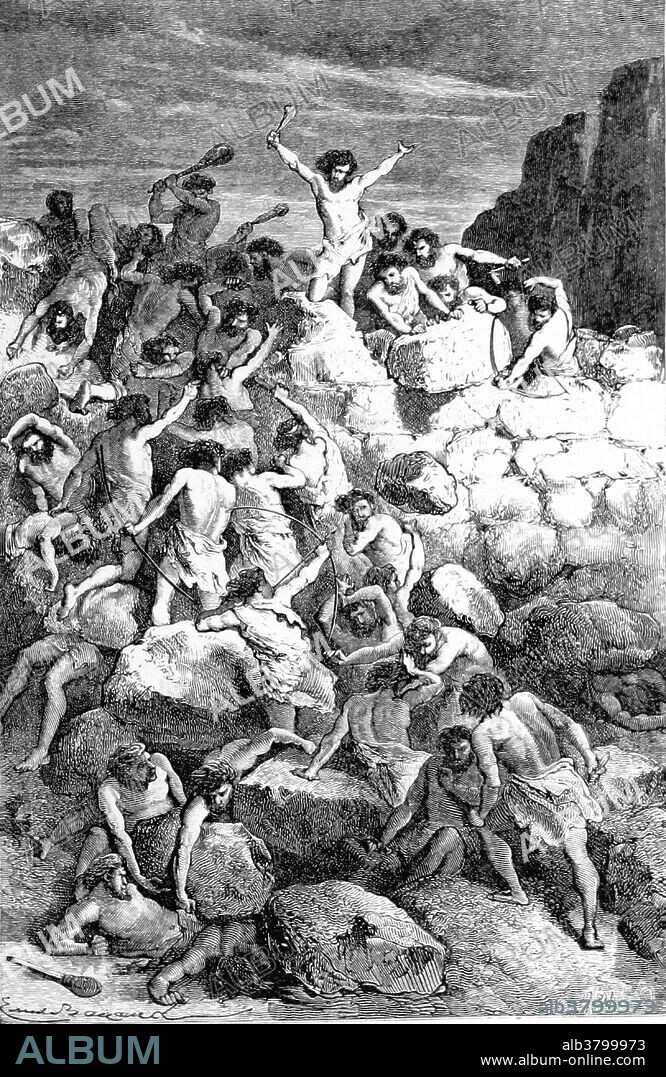alb3799973
Prehistoric Man, Stone Age Warfare

|
Ajouter à une autre Lightbox |
|
Ajouter à une autre Lightbox |



Avez-vous déjà un compte? S'identifier
Vous n'avez pas de compte ? S'inscrire
Acheter cette image

Titre:
Prehistoric Man, Stone Age Warfare
Légende:
Voir la traduction automatique
When humans first began fighting wars is a matter of debate among anthropologists and historians. The first archeological record of what could be a prehistoric battle is at a Mesolithic site known as Cemetery 117. It was determined to be about 14,340 to 13,140 years old and located on the Nile near the Egypt-Sudan border. It contains a large number of bodies, many with arrowheads embedded in their skeletons, which indicates that they may have been the casualties of a battle. Beginning around 12,000 BC, combat was transformed by the development of bows, maces, and slings. The bow seems to have been the most important weapon in the development of early warfare, in that it enabled attacks to be launched with far less risk to the attacker. While there are no cave paintings of battles between men armed with clubs, the development of the bow is concurrent with the first known depictions of organized warfare consisting of clear illustrations of two or more groups of men attacking each other. These figures are arrayed in lines and columns with a distinctly garbed leader at the front. Image taken from page 235 of "Primitive Man" by Louis Figuier. Revised translation from the French by Edward Burnet Tylor. Illustrated with scenes of primitive life, 1870.
Crédit:
Album / Science Source / British Library
Autorisations:
Modèle: Non - Propriété: Non
Questions sur les droits?
Questions sur les droits?
Taille de l'image:
2925 x 4500 px | 37.7 MB
Taille d'impression:
24.8 x 38.1 cm | 9.8 x 15.0 in (300 dpi)
Mots clés:
 Pinterest
Pinterest Twitter
Twitter Facebook
Facebook Copier le lien
Copier le lien Email
Email
